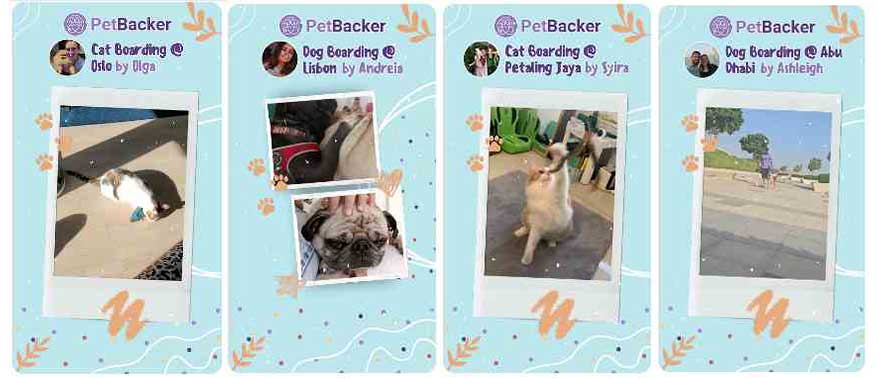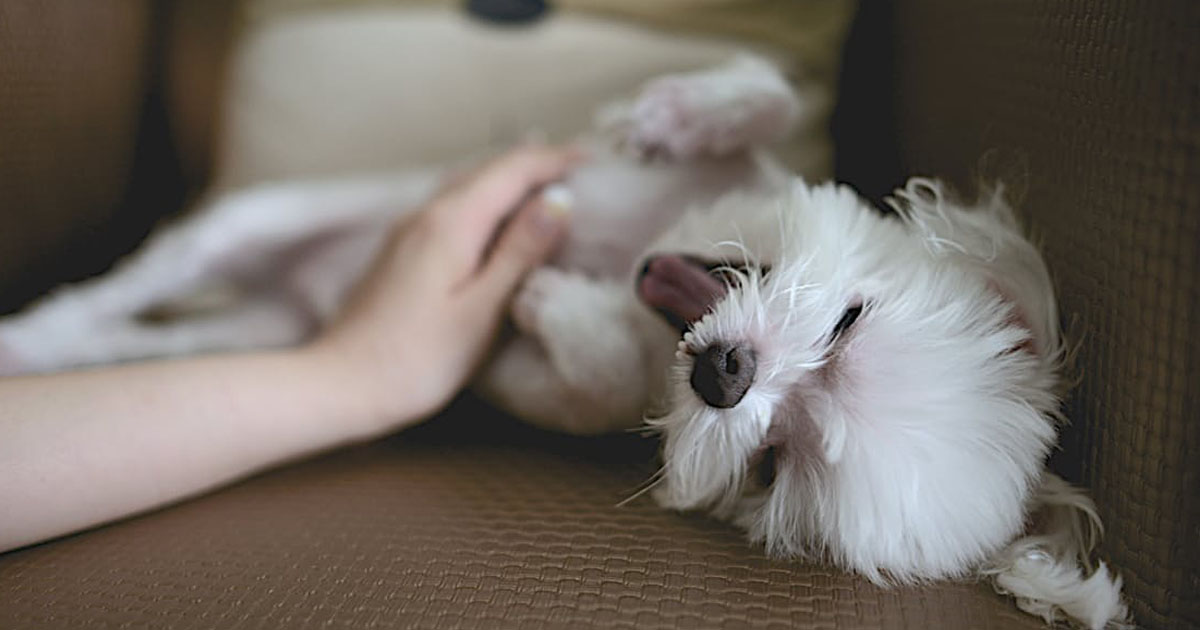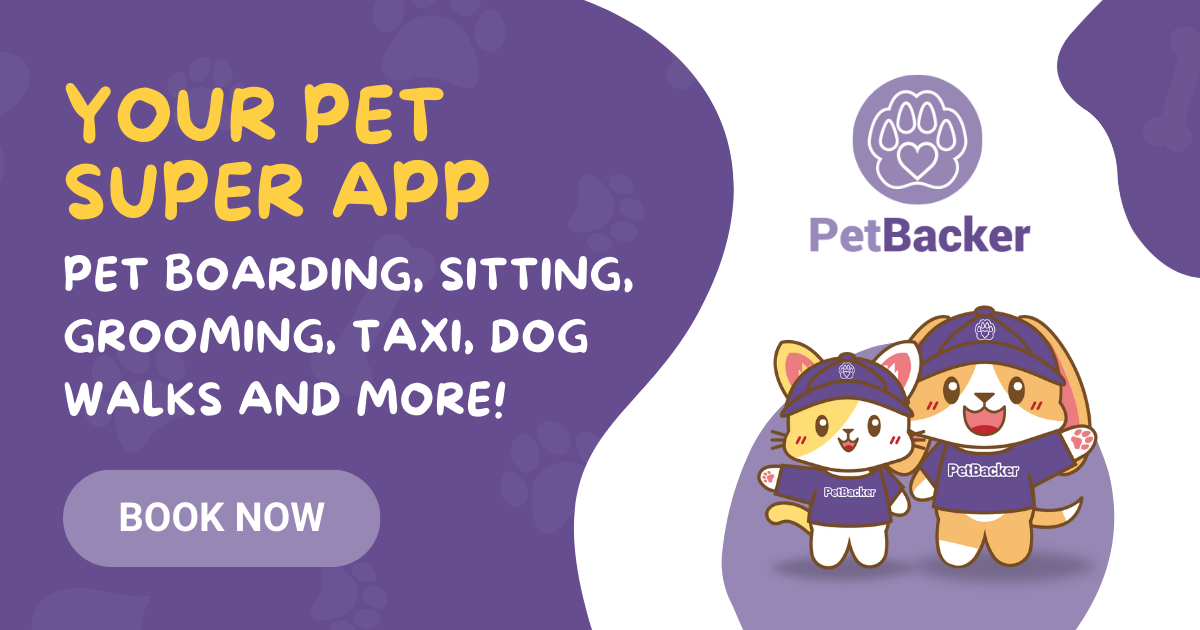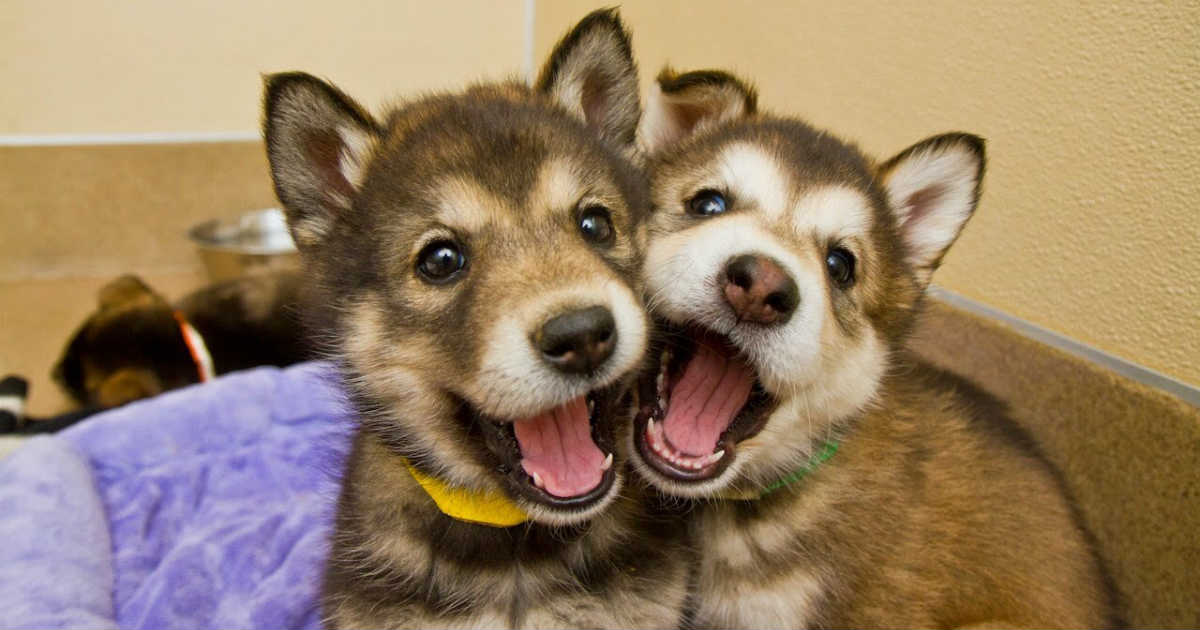Love being around dogs and cats and would like to make a little extra money doing what you love? Pet parents all over the world are desperate for help with their pets when they can't spend as much time with them as they would like or when they are off on a pet-free vacation. In 2015, in the United States alone, pet parents spent USD 5.41 billion on pet services like pet sitting and grooming(1).
However, if you have never had a dog or cat of your own, or even if you do, but have never taken care of another person's pet, it can be a daunting experience. Here are a few essential pointers to be aware of before you start off with accepting your first pet-sitting job.
Understanding Pet Behavior
1. Familiarize Yourself with Marking Behaviors
First up, if you are a clean freak, do know that dogs may mark your home when they arrive. Dogs mark by urinating small amounts on vertical surfaces, usually while raising a leg. Some dogs never mark in their own homes but will mark when they visit a new home. Cats are a little less difficult to handle in this sense and would be happy with a cat litter box.
A dog is likely to urine mark when visiting a home if another dog has previously marked in that home. Males are more likely than females to urine mark, and reproductively intact males are more likely to mark than neutered males, especially in the presence of females or rival males. If you are particular about this, keep an eye on the dog when they are roaming around in your home and identify the spots it has marked so you can wash it after they are gone.
No matter how clean the dog is, it will leave a lingering "dog smell" in your home. These smells originate from their glands, fur, and the scent marks they leave behind. So if you are particular about smells, you might want to think twice. These smells will go away when you clean up after them, so rest assured it isn't forever.
2. Dealing with Shedding and Fur
Pets, especially those with short coats, will shed fur to some degree. Keeping the pet well-groomed will also minimize the amount of shedding. Have a vacuum cleaner ready for regular clean-ups, ensuring a clean and comfortable environment for both the pets and yourself.

Communication with Pet Owners
3. Ask Important Questions
Before the pet-sitting assignment begins, inquire about the pet's behavior, preferences, and health. Understand their feeding habits, favorite toys, and any specific needs. Clear communication with pet owners helps tailor your care to the individual needs of each pet. Some questions you can ask include:
- What is the dog's or cat's behavior, what it likes, and dislikes? Does it have a tendency to bite or get mood swings? Does it get anxious when left alone?
- What are its feeding habits? Does it finish its food immediately or takes a long time to do so? What kind of foods does it eat, or if the owner can provide the food?
- Does it have its own favorite bed or basket or toys? If they do, it would be good for the pet parent to bring it along to reduce separation anxiety and give it some sense of familiarity in an otherwise foreign location.
- Has it been properly vaccinated, especially if you have your pets around and if it is susceptible to any disease or infections, for example, sensitive skin that needs to be cleaned after pooping. You may ask for documentation proving that the vaccination was made via the app or on arrival.
- Is it friendly to other dogs or cats, strangers, or children? In particular, if hosting pets of different types like dogs and cats together, or large animals and small animals such as dogs and rabbits, take extra precaution even if your pet or the pet owner's pet is said to be friendly to other animals. Keep them separate when you are not around to keep an eye on them.
- What commands the dog understands and if the owner can demonstrate it. It's always good to be able to communicate with the dog.
These answers would help reduce a lot of guesswork and assist in managing the dog in the next few days.
4. Emergency Preparedness
Know the location of the nearest veterinary clinic, have the pet owner's contact information, and understand emergency procedures. Keeping records and promptly informing owners of any issues ensures a quick and effective response to unexpected situations.
Interacting with Pets
5. Spending Quality Time
Be prepared to spend quality time with the pets, including daily walks and playtime. Dogs need walks at least once a day to exercise or pee and poo and are dependent on the breed. There are some breeds that have a small bladder, and this can affect frequency. An easy way to know is to simply ask the dog parent how frequently their dog needs to be walked. Remember to pick up after the dog poos, just to be polite. Most pet shops stock a variety of paper poo bags. Understand their exercise needs, and remember that pets may appear anxious or exhibit behavioral changes during the initial days in a new environment.
6. Managing Interactions with Other Pets
Dogs may not be friendly towards other dogs or small animals so it's always advisable to have a meet and greet between your dog and the other person's if you have one. Dogs might play rough and cause injuries while playing with each other. Let them play together only when you are absolutely sure they will not hurt each other, else keep an eye on them while they are playing so you can break them up when things get too rough.
This is especially true if you are taking care of more than one dog in your home. A separate area is advisable if the dogs you are hosting are not playing well with each other. Pay even more attention if you are hosting pets of different types like dogs and cats or dogs and rabbits. Be extra cautious if the pets you are hosting vary greatly in size or are known breeds with aggression. Always keep them separate and secure if you are not able to keep an eye on them.
7. Safety Precautions
Always be careful, no matter how friendly the dog is; they may bite, and it won't be pleasant, especially since you are a stranger to it after all. Don't take for granted. An important note, some dogs get aggressive if you touch them or go near them while they are feeding; it's best to avoid them while they are feeding. They can also be aggressive when cleaning them especially near the areas of their private parts.
Do also be careful when leashing or unleashing them as they may feel that you are a threat when doing that. If you have a small baby in your home, keep the pets you are hosting away as there is a chance that pets may be hostile towards the baby and cause injury and in the worst case even death.
We highly advise pet handlers to invest in a pair of animal handling gloves. No matter how much you love pets, it always pays to be careful when handling another person's pet. Especially for the first day or two. Gloves will save you a lot of unnecessary pain and usually cost only $20 to $30 for a good pair.

One more thing to note is do not take their toys away unnecessarily especially if they start getting aggressive. They may feel threatened that you are trying to take something familiar away from them, considering they are in a strange new area with a stranger and do not understand what you are doing.
Prepare your home for the pet
8. Home Safety Measures
Secure Hazardous Items: Pets are naturally curious creatures, and as a pet sitter, it's crucial to create a safe environment for them. Keep potentially hazardous items or liquids out of their reach. Whether it's cleaning supplies, medications, or small objects that could be swallowed, store them securely in locked cabinets or designated pet-proof rooms. This precautionary measure ensures that pets won't accidentally ingest harmful substances or swallow small, potentially dangerous items.
Identify and Eliminate Potential Choking Hazards: Conduct a thorough sweep of the pet's environment to identify any small objects that could pose a choking hazard. Items like rubber bands, small toys, or even household items that pets might find interesting should be removed or secured. This extra step goes a long way in preventing accidents and promoting the safety of the pets under your care.
Be Mindful of Plants: Some plants can be toxic to pets if ingested. Before starting your pet-sitting assignment, familiarize yourself with the types of plants in and around the pet's living space. Remove any toxic plants or ensure they are out of the pet's reach. This precaution helps prevent accidental poisoning and keeps the environment pet-friendly.
Supervise Outdoor Activities: If the pet has access to outdoor spaces, monitor their activities closely. Ensure that the area is free from potential dangers such as sharp objects, toxic plants, or other animals. Keep an eye on the pet to prevent them from wandering into unsafe areas or encountering substances that could harm them.
9. Preventing Escapes
If it's a small dog or cat, you won't want it running away or get lost. Make sure your home has been enclosed with metal netting to prevent it from running or squeezing out. This may include gaps between your gate and fence or drainage. It might even dig its way out of your home so do keep an eye on its behavior in your home.
Check for loose handles or easy to open doors and windows as the persistent pet can claw (or paw) its way out. Take care when opening your gate or home door when the pets are around, in case they run out suddenly. For cats, you may need to prepare a cage to put them in while you sleep as cats do tend to stray, but do ask the pet owner if they are alright with it beforehand.
If you live in a high-rise unit, do not place the pet on your balcony as they might slip through the bars or jump out of the balcony. Do note that although cats usually know how to jump from a height that is too high, occasionally they misjudge the height and can seriously hurt themselves or even result in death.
10. Pet-Proof your Home

Pets can be destructive, no matter how trained they are. They mean no harm and may simply consider your furniture or household items as a toy or damage your home in an attempt to go out. Here are a few things you can consider:
- Doors are quite vulnerable to cats or dogs trying to claw themselves out. Get a door protector to prevent scratches. These are very affordable and easy to replace when scratched and they can be removed when no pets are around.
- Sofas are a favorite for pets as it is comfy and pets get to be close and cozy with you. A durable throw blanket can protect your furniture from fur and stains.
- Set up a dedicated pee and poo area in your house with a rubber or plastic tray specialized for this purpose or litter box so should the pet needs to go urgently in the house they have somewhere for them.
- Furniture protectors help protect your table or chair legs from being scratched or chewed on by a bored pet.
The above list is not exhaustive but would cover a majority of the accidents that might occur. Taking these extra efforts would avoid the uncomfortable discussion with a pet parent over who should pay for damages made by their pet staying in your home. Pet parents expect that your home is already pet proof when you accept a pet sitting job and it really does not give them a great feeling or experience when they are then asked to pay for damages.
11. Leashing and Outdoor Safety
Always keep the pet on a leash when outdoors, such as during walks or in an area that is not securely enclosed. This precaution is essential to prevent the pet from running away, engaging in fights with other pets, getting bitten, or being hit by moving vehicles. Ensure that the leash or harness, whether provided by the pet owner or yours, is secure. If the leash provided by the pet owner is not secure, use your own instead. It is not advisable to use a leash or harness from the pet owner if you are not confident it is secure.
If the pet is in your car, always leash it before opening the car door. This prevents pets from running away when the car door is opened. Pets may attempt to escape with even a slight opening, making it challenging to catch them in time.
Insurance typically does not cover accidents of this nature, as it is considered negligence. Extra care is necessary to avoid such incidents.
Avoid leaving pets unattended in your car. Not all pets are comfortable being left alone in a car and may become stressed or cause damage to the vehicle interior. Never leave pets in the car without air conditioning, especially in hot countries.
Be particularly careful about leaving your dog unattended outside your home, especially in areas prone to dog theft. A purebred dog is an attractive target and can be valuable.
Keep a Daily Log or Report
12. Document Activities
Keep a detailed record of your time with the pet, including feeding schedules, activities, and any unusual behavior. If you notice anything out of the ordinary or if an incident occurs, promptly inform the pet owners. Clear communication ensures that any issues can be addressed promptly, maintaining the well-being of the pet during your care.
13. Keep Pet Parents Updated
Always keep pet parents updated on key activities daily. Doing this protects yourself from unnecessary accusations from pet parents after the job is complete and gives pet parents peace of mind. This can lead to them booking your services again or recommending you to their friends.
You can use dedicated pet care apps such as PetBacker, which offer features like job updates with moments and even AI-generated highlight videos to share with pet parents or keep as memories of your time with the pet.

PetBacker AI Video Highlights
Miscellaneous Considerations
14. Check for Fleas and Infections
Thoroughly check pets for fleas, skin infections, or injuries before accepting them into your home. Communicate any findings to the pet owner and always be prepared with anti-flea products if needed.
If you find any skin infections or injuries when accepting the dog, do inform the pet parent immediately or take a photo to document that these were present prior to you hosting their dog.
15. Check if the pet is neutered/spayed or if it is currently in heat
This is a very important safety precaution to take. Unspayed female dogs who are going through heat tend to get a lot more aggressive than usual. This aggression will obviously cause her to inadvertently harm the people around her- including you. In that case, you must always check/enquire first and take the necessary precautions in order to prevent any incidents.
Precautions most pet sitters take when it comes to aggressive, unspayed/unneutered dogs include but are not limited to: Separation from the rest of your client's pets, extra attention, special treatment, or in extreme cases, even to reject the job itself!
Speaking about aggression, do take caution of pregnant dogs as well. As a mother, they would do anything in their care to ensure the well-being of their children- just like any normal mother would. Thus, aggression and overprotectiveness will likely kick in during pregnancy. The same thing applies, take your usual precautions, and be gentle with the dog in question.
Keep a watchful eye if there is a female dog or cat in heat with males in the same area. When a female cat or dog is in the same area do be extra careful as the males may fight quite aggressively. Keep males separated or on leash away from each other at all times when the female is present or you might end up with two bloodied males.
16. Food and Dietary Restrictions
Be conscious of what you are feeding the pet, even if the food came from the pet owner. Where possible you should always request the pet owner to provide the pet's daily food. There are various benefits to the pet owner providing the pet's own food, most of which is that it would be food that is familiar to the pet, especially since they are in a home they are not familiar with. It also avoids the headache of a pet that refuses to eat food that you feed.
If the pet is a cat or dog be careful that the foods do not contain amongst others:
- chocolate
- raisins
- walnuts and macadamia
- yeast dough
- avocado skin
- xylitol including gums and candy
- caffeine
- onions
- garlic
- alcohol
- bones whether big or small
17. Neighborhood Dynamics and Housemates
Ensure your other half or housemates (or even your landlord) approve of you taking up a pet sitting job. Just because they are friendly with the occasional pet does not mean that they approve of long term pet sleepovers. Everything you are going to experience, they too will experience from the crying to barking and the mess they make (of course the mess they make is probably on you to clean up), so do ask if they are ok with it before you start. Returning a pet after you have accepted it to your home before the job is done won't be a nice thing to do to a pet owner who may not even be in the country at that moment.
Be aware of other pets in your neighbourhood as well. Although typically domestic pets are friendly towards each other, do still take precautions if your neighbours also have pet dogs or cats. When a new pet is introduced to the neighbourhood, existing pets may be aggressive towards the newcomer entering their territory. Take care that the pet you are hosting or your neighbour's pets are not able to cross boundaries by erecting fences or ensuring neither are unleashed when in open areas. You could introduce the pet you are hosting to your neighbour's pets as well to ensure they are friendly towards each other, or give them a new friend!
18. Boarding Checklist
Request essential items from pet owners to make the pet's stay comfortable, including food, favorite toys, and necessary accessories. Familiarity helps a pet adjust to new surroundings. Some of the suggested items would include:
- Sufficient food (pls inform you of allergies)
- Leash/harness
- Pee pads (for indoor boarding)
- Favorite toys/bed (if applicable)
- Favorite snacks
- Dog bowl (for meals)
19. Emergency Contacts
Keep contact numbers for local vets in case of emergencies or for general advice.
Conclusion
With these comprehensive guidelines, you're well-prepared to embark on your pet-sitting journey. Remember that each pet is unique, and your attentiveness and care will contribute to a positive experience for both the pets and their owners. Enjoy the learning experience and have fun in your new role as a responsible and caring pet sitter!











